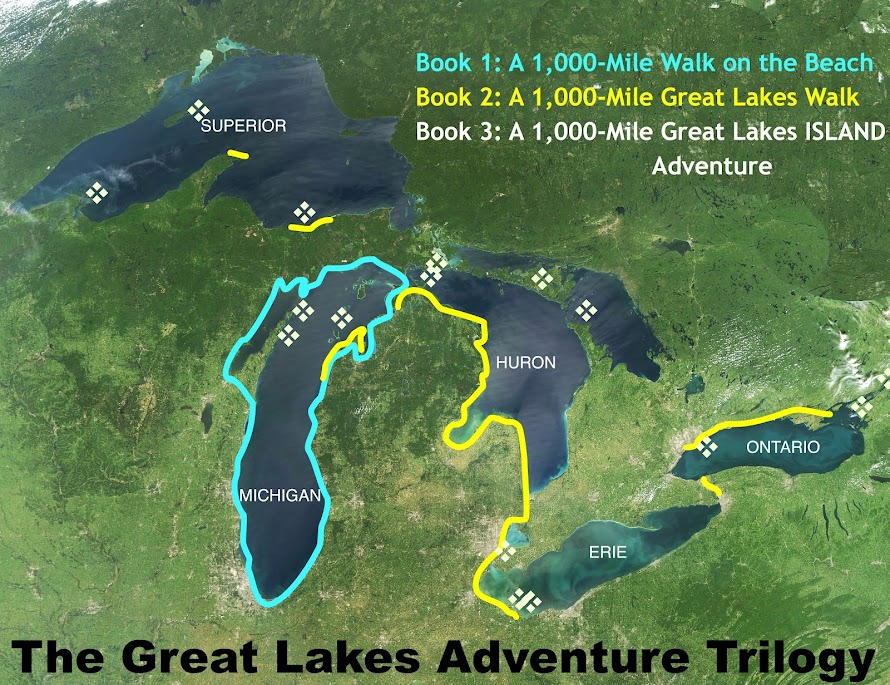While hiking in April with the cold, windy weather, I looked forward to the warmer weather ahead. When it gets much above 80 degrees, though, I tend to overheat and have to take precautions against heat exhaustion.
 |
This is my old "wet bandana over the ears " trick
|

With many days above 85 degrees, I had to improve on the first method of cooling off. I began rolling ice in my bandana at the beginning of the day and securing it around my neck. Ahhhhhhh.....
Hydration is always key to keeping cool, and I went through many gallons of water and sports drinks on this hike so far.
 |
Even Ben used the wet bandana trick
|
 |
"Florence of Arabia" look
|
On ultra-sunny days, I would wet my bandana and put it under my hat to cool me and protect me from the sun's rays.
 |
"Little Red Riding Nerd" look
|
I found that tying the wet bandana underneath my chin was even more effective in cooling me off. Not a great look, but it beat passing out on the shores of Lake Ontario!
Of course a dip in Lake Superior was the best way
to get out of the heat.
Go Ben!!


























































